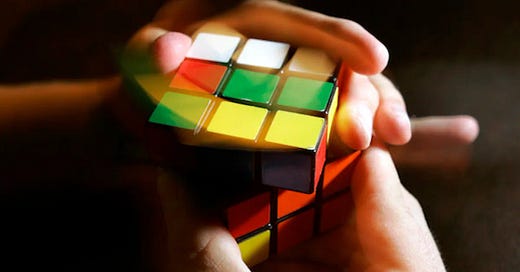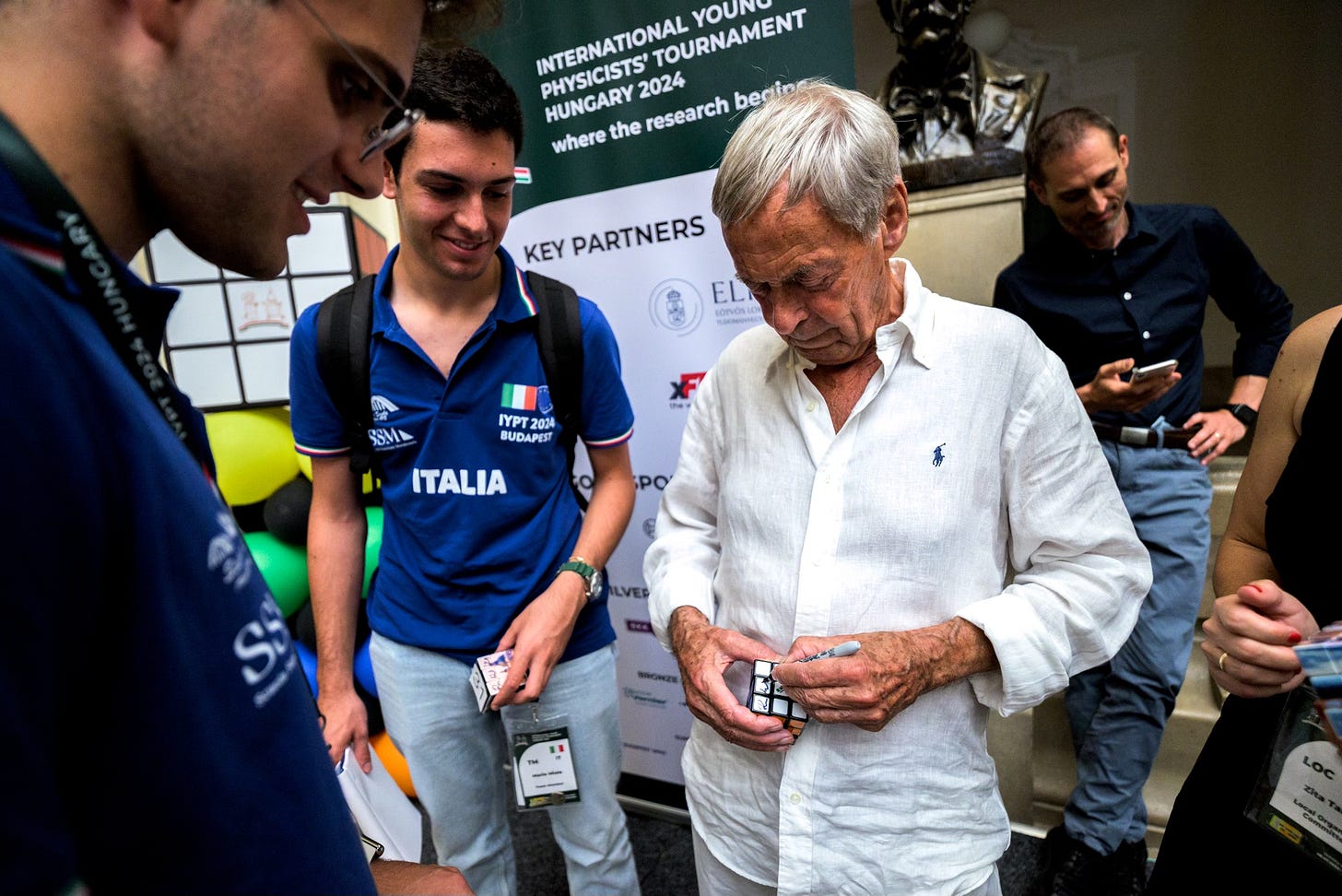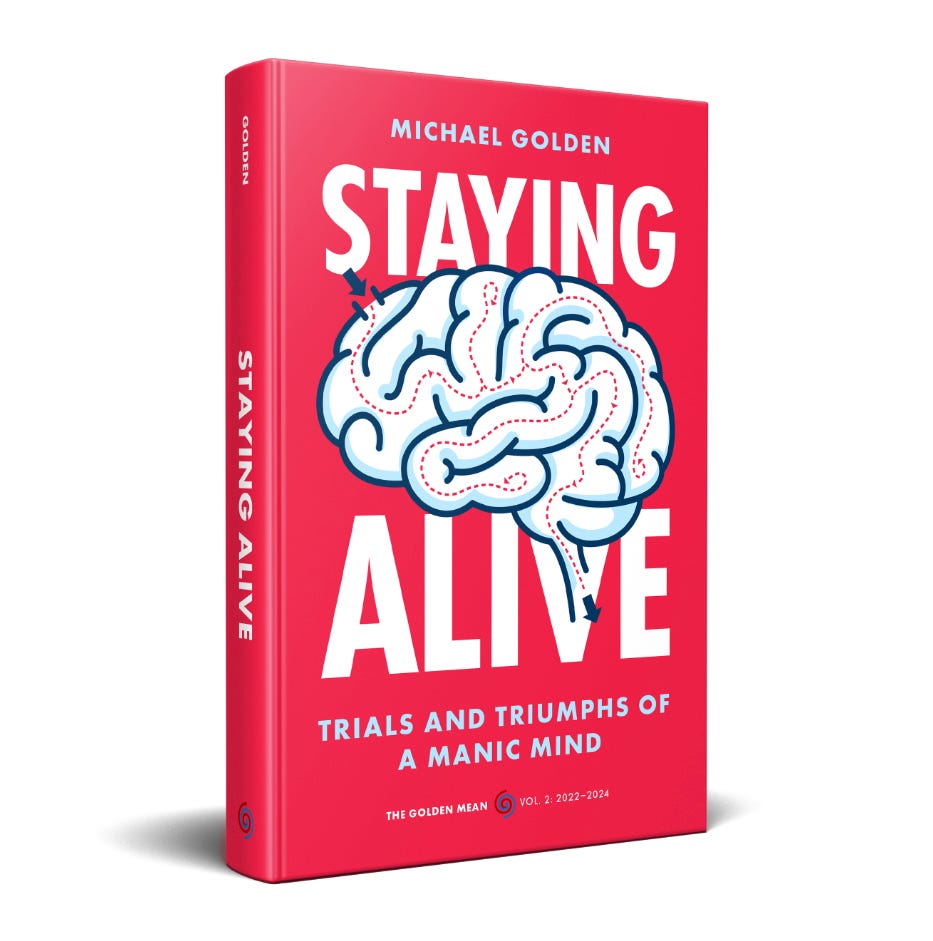Hidden Lessons: 50 Years of the Rubik's Cube
"Ernő Rubik may have been an academic, but he was also an entrepreneur. He just didn’t know it quite yet."
With everything going on, it’s possible that you may have missed the recent 50th anniversary of the Rubik’s Cube. I know, big deal. Especially since I sucked at doing the stupid thing. Game. Puzzle. Whatever.
That said, the story of the invention of the Cube, its popularity and resurgence over the past half-century actually present a couple of hidden lessons for the mind to consider. And this mind will take all the little nuggets it can get.
*HUGE THANKS to everyone who made our official book release such a success!
**TGM readers, you can still get your free E-copy of STAYING ALIVE and also receive ALL TGM content in 2025 when you sign up for the annual subscription!
My favorite part about the birth of the Cube is that its inventor didn’t have a clue about what he was really creating. In 1974, a Hungarian sculptor and architect named Ernő Rubik was a faculty member at the Academy of Applied Arts and Crafts in Budapest. The first cube he designed was called the “Magic Cube” — but he wasn’t trying to entertain people. Rubik was just trying to find new ways to teach his students about geometry and three-dimensional spaces.
The first time that the professor scrambled up all the mini-cubes that made up the whole, he realized it wasn’t easy to put back together. In fact, it took him a month. He knew right then that what he had invented was a puzzle. Just months later, he was applying for a patent. The Rubik’s Cube would ultimately sell more than 500 million units!
Some would say he got lucky. I would say that anyone who is bold enough to use their brains and talent to invent something completely new to address a problem — to the victor go the spoils. Ernő Rubik may have been an academic, but he was also an entrepreneur. He just didn’t know it quite yet.
But what Rubik did know was that his Cube engaged people’s minds. The puzzle was fun, yes, but it also had a productive purpose. He once explained that the Rubik’s Cube activated"
“very important skills in all of us: concentration, curiosity, playfulness, the desire for a solution. These form the basis of all creative human activity. Puzzles aren’t just for fun or to kill time. Puzzles show us how to use our own creativity.”
The closest I come to doing puzzles is playing Scrabble. But even a word game like that will activate my brain and make me think — a hell of a lot more than binging Netflix. It can be easy to forget that our minds truly need exercise, of all kinds.
The Rubik’s Cube sold about 200 million units between 1980 and 1983. It slowed down when copycats flooded the market with similar models. But through more innovation, the original made a big comeback. “Speed-cubing” became a thing, and in 2018, Red Bull held its first Rubik’s Cube World Championship.
In the first quarter of this new century, the Cube has been featured six times on The Simpsons, in Disney movies and on America’s Got Talent. It was even the subject of a documentary called The Speed Cubers (where else, but on Netflix). The film featured a 23-year-old man named Max Park who holds the world record for solving the puzzle: 3.13 seconds. 3.13!
So the first lesson is that you never know where talent will lead you. Take a risk. Take a chance. Screw the naysayers. The path to discovery moves in all kinds of interesting directions.
The second lesson that stands out to me is the humility with which Rubik always carried himself after creating something that had such an epic and lasting impact.
To date, the Rubik’s Cube, which is licensed by Ideal Toys, has generated more than $5 billion in revenue. In 1974, Ernő Rubik was being paid $200 per month as a professor of design and architecture. He soon became one of the wealthiest people in Hungary — receiving checks for $30,000 per month. Yet he went right back to work, making his teacher’s salary. Moreover, Rubik seemed unfazed by his newfound wealth. He spoke about it in a 1986 interview:
“In our currency, I am a multimillionaire. In dollars, I am also a millionaire, but unfortunately I can't say exact numbers, because I really don't know. I do not check the bank account all the time.”
Beyond the $100 million-plus sum that he ultimately earned from the Cube, Rubik has said that he has thought little about his growing fame over the years:
“I’m not the person who loves to be in the spotlight and so on and so forth. That kind of success is like a fever, and high fever can be very dangerous. It’s not reality.”
Pretty damn grounded. Especially in a world where everyone’s “15 minutes of fame” has been democratized down to about 15 seconds.
I am still not very adroit at solving the Rubik’s Cube. But its invention and inventor remind me of what the real juice is when it comes to any kind of work or drive toward progress: the doing of it. The creativity. The ingenuity. The process. The here and now. And the fun of it all.







